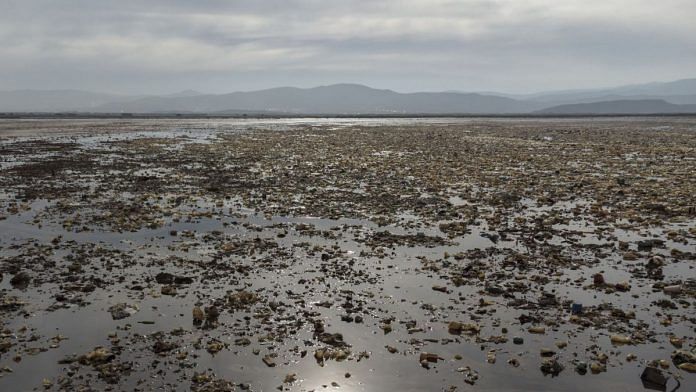Pharmaceutical pollution of the world’s rivers is far more extensive than previously thought – so much so that it now poses a global threat to environmental and human health, according to new research.
A team of scientists from York University in the UK took over 1,000 water samples from 258 rivers in 104 countries and found that many contained concentrations of medicinal drugs that exceeded safe levels.
Only two rivers in Iceland and one near a village in Venezuela, whose inhabitants use no modern medicine, were completely unaffected by pharmaceutical pollution.
The highest concentrations were found at Lahore, Pakistan; La Paz, Bolivia; and Addis Ababa, Ethiopia. The Kai Tak River in Hong Kong SAR had the greatest number of drugs present in a water sample, with 34 pharmaceuticals identified.
Rivers in the Belgian capital Brussels, in Luxembourg and Dallas, Texas, were among the 20% of waterways with the highest concentration of drugs. Even in Antarctica, four types of pharmaceuticals were detected.
Samples were taken from every continent, and the problems appear worse where wastewater treatment is least effective and in some places where drugs are manufactured, according to the researchers.
They say the level of pharmaceuticals in rivers poses a thr
Also read: Covid response has generated thousands of tonnes of extra medical waste in health threat: WHO
Drug-resistant killers
The discovery of antibiotics in rivers is particularly concerning, as this helps bacteria to develop resistance to them, the research team says.
The scale of the threat that antibiotic resistance poses was highlighted in January 2022 by a study published in medical journal The Lancet. It said that antibiotic-resistant bacterial infections killed almost 5 million people in 2019.
The World Health Organization lists antimicrobial resistance as one of the top 10 global public health threats facing humanity, saying misuse and overuse are the main drivers of drug resistance.
And the World Economic Forum’s briefing paper Antimicrobial Resistance and Water: The Risks and Costs for Economies and Societies forecasts that antibiotic resistance may cause as many as 10 million deaths a year by 2050.
Significantly, the study in The Lancet said the presence of drug-resistant bacteria is highest in Sub-Saharan Africa and South Asia – both regions that were found to have the highest levels of pharmaceutical pollution in the York University research.
The highest level of antibiotic pollution was in a river in Bangladesh, where levels of metronidazole were 300 times over the safe limit, the York study said. Concentrations of the antibiotic ciprofloxacin exceeded safe levels in 64 rivers.
Health risks for rivers
It’s not just human health that’s being put at risk by pharmaceuticals in our rivers. Other drugs, such as contraceptives, can prevent fish reproducing and increase their vulnerability, meaning there could be fewer fish for people to eat, the York research says.
The solution to the problem is to improve sewage systems and wastewater treatment, the report’s authors say. Around 80% of wastewater is released into the environment untreated, according to World Bank figures.
As well as untreated sewage discharge, the York team identified hospital waste, water-treatment plants, septic tanks and pharmaceutical manufacturing sites as the main sources of drug pollution in rivers.
“We know good sewage connectivity and wastewater treatment is the key to minimizing, though not necessarily eliminating, pharmaceutical concentrations,” Dr John Wilkinson, who led the York University study, told The Guardian. “However, that is extremely expensive as there’s a lot of infrastructure involved.”
The World Economic Forum’s analysts agree. They estimate that the cost of meeting global clean water targets could be as high as $47 billion annually. But they say the benefits would include not just improved health, but also more resilient economies for some of the world’s most vulnerable people.
This article was originally published in the World Economic Forum.
Also read:Where do used Covid masks, gloves end up? Infection surge creates waste problem for India



